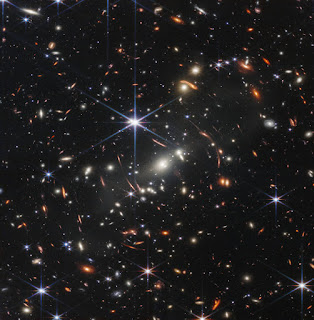With the pier maintenance completed it was time to start imaging again.
The Trifid Nebula (catalogued as Messier 20 or M20 and as NGC 6514) is an H II region in the north-west of Sagittarius in a star-forming region in the Milky Way's Scutum-Centaurus Arm. It was discovered by Charles Messier on June 5, 1764. Its name means 'three-lobe'. The object is an unusual combination of an open cluster of stars, an emission nebula (the relatively dense, reddish-pink portion), a reflection nebula (the mainly NNE blue portion), and a dark nebula (the apparent 'gaps' in the former that cause the trifurcated appearance, also designated Barnard 85). Viewed through a small telescope, the Trifid Nebula is a bright and peculiar object, and is thus a perennial favorite of amateur astronomers. (wiki)
 |
Trifid Nebula (M20) - June 27, 2022
William Optics GT102 and ASI533MC Camera
146x60 sec at f/5.5 |
My image of the Trifid is part of a study I am conducting on the benefits of taking lots of short exposure subs vs a moderate amount of longer exposure subs. Longer subs are prone to satellite and aircraft crossings, clouds, and other image corrupting events, and inaccurate guiding (although my AP1100 mount produces almost perfect guiding). So, it would be really good if you could, say for example, take a hundred 30 second subs and make it produce as good a final image as ten 300 second subs - the total integration time is the same; 50 minutes.
Preliminary results are encouraging as demonstrated by the image above which was processed as 146 single 60 second broadband subs. Narrowband imaging requires substantially longer subs to collect sufficient light through the special filters and so would not benefit from this technique. But OSC (one shot color) and LRGB filtered mono cameras would benefit.
Check back later when I post the complete study results.






